How to make sliding interior doors with your own hands?
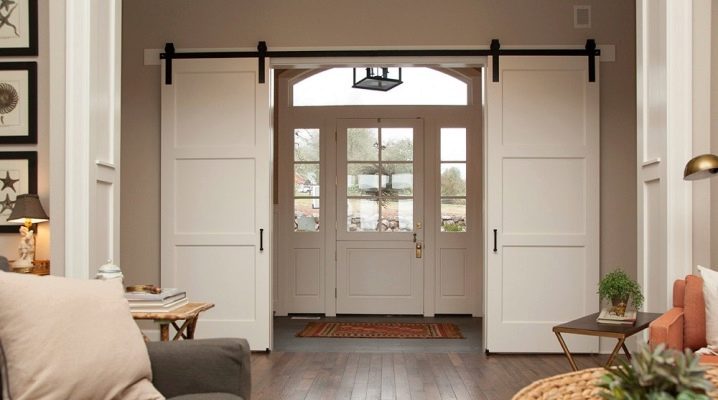
By making an interior door with your own hands, you will not only save a significant amount of money, but also be able to embody the most daring design ideas in the interior. Also, there will be no need to call specialists, choose among standard solutions or argue for a long time, defending your vision. But on the other hand, it is necessary to master all the subtleties and nuances of the independent manufacture of door structures.

Features and Benefits
A sliding door is justified not only because it is outwardly beautiful and can fit into a wide variety of interiors. Its important advantage is the most rational use of space.



Not a single square centimeter will be wasted and it will be possible to functionally and stylistically divide the room by dividing its new parts.

In addition to the listed advantages, such input structures:
- do not slam shut by themselves in a continuous draft;
- do not interfere with airing the house or apartment;
- characterized by easy and smooth operation of the opening and closing mechanism;
- allow the use of automation;
- eliminate the need to create thresholds.
- the design itself is extremely simple - the roller mechanism is attached to the canvas and is wound into the guides in a certain way.



Types and mechanisms of interior doors
For apartments and private houses, they use such options as:
- compartment doors (with one leaf or a pair of leaves moving parallel to the wall along the rails);
- cassette (at the moment of opening, the sash is removed inside the case);
- radius (stand out with a unique form);
- cascading (any sash has its own, autonomous guide);
- in-door (when the sash is opened, they go towards, you can only pass through a part of the opening);
- swing-sliding.




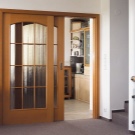

The sliding door mechanism can have a different number of guides and carriages on them. A thick-walled aluminum profile is almost always used for the manufacture of rails.
So that the sash does not break out of the guide and does not roll out of it, limiting and braking parts must be added.

Sliding doors are divided into:
- suspended (held only from above);
- supporting (the load from which is distributed only along the lower guide). A typical mechanism, which can withstand a load of up to 120 kg, in most cases does not require a threshold.
.


An open sliding door, all structural elements of which are visible, can have a door leaf no heavier than 100 kg. In the hidden type, the bottom rails are not used and they are incompatible with glass structures
A door closer can be installed on doors of any type, guaranteeing smooth opening and closing.



During the installation process, the slightest irregularities should be detected and immediately eliminated, otherwise the sash can automatically roll back. This problem occurs especially often in the Versailles compartment system.

How to install?
For those who do not have much experience in home repair and installation of various door structures, it is best to opt for single-leaf doors. Having mastered working with them, you can easily cope with more sophisticated systems. The first step is the markup to help you set the guides. Measure the height with a tape measure, starting from the floor surface, add two millimeters to the resulting value (a gap is needed) and take into account the height of the roller apparatus.
A pair of marks are connected in a straight line.Be sure to make sure that it is completely horizontal (the building level will help with this). Further below this line, guides are mounted. The fastening method depends on the severity of the door. The lightest options can be installed on dowels, and the heavier ones will require a bracket. The heaviest entrance blocks must be supported by the timber.

When the roller is inserted into the rails, the sashes and the curtain are fastened from above with brackets. If the canvas is made of glass, the fasteners will not be required as usual.
Even if you can easily lift the canvas, involve a partner: this is faster, and more reliable, and easier.

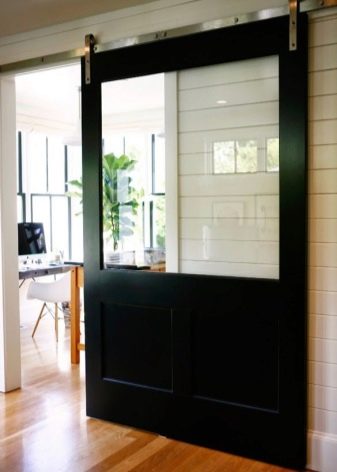
Additional nuances
When putting the door with your own hands, periodically check with a level for any deviations, and if necessary, tighten the bolts or other fasteners. The roller mechanism should be masked with a decorative film, and only then install the accessories. Sliding doors placed in a niche require the formation of a plasterboard pocket on the adjacent wall.
After completing all work, check that the structure and any part of the mechanism operate without interruptions, without stress. The rollers should roll on the rails easily and freely, without bumping into obstacles. Extraneous noises and creaks indicate that something has been done wrong.

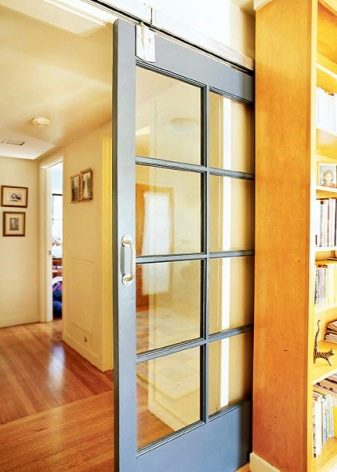
For more detailed instructions on how to install a sliding door with your own hands, see the following video.
Assembling the structure
In order for the interior door to be installed, it still needs to be assembled. It is necessary to prepare a set of boards, a tape measure, a screwdriver, a level and fasteners for work. The advantage of self-assembly will be that you are almost unlimited in the choice of product parameters.
Most often, pine boards or laminated chipboard are used, the thickness is the same in these cases - 1.6 cm.


If time is more important to you, you can purchase a factory linen. The joints of the boards or slabs are covered with PVA glue, after which they are tightened with a clamp. On each side, three supports are added to the screws and the workpiece is left to dry for exactly one day. After the adhesive layer has hardened, you can remove the clamps and saturate the canvas with stain. The design of a sliding interior door implies a slope of two or three degrees towards the side in which they close..
Next, you will have to buy a pulley wheel and a couple of rollers (it is extremely unlikely that you will be able to make them at home).

But it is quite possible to make a hook, for this they take steel strips 35-40 mm wide, the thickness of which is 3-3.5 cm. An angle grinder will help to cut such steel into the necessary fragments. Holes for roller axles are prepared in the workpiece clamped in a vice. The product will last long enough if you paint the canvas with a special primer. M8 bolts are screwed into the holes with a diameter of 0.8 cm over the guide. You need to fasten the guides above the opening in order to set them the correct position.
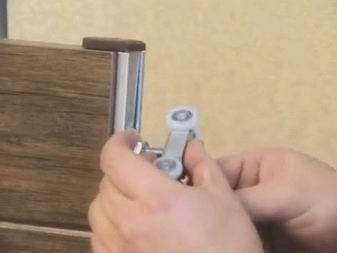
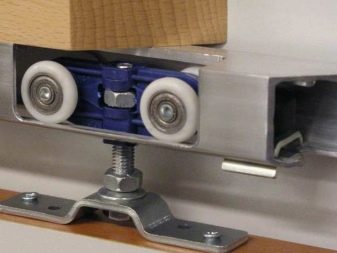
From all of the above, we can conclude that it is not difficult to make and install sliding interior doors with your own hands. You just need to carefully follow the simplest rules, and then success will be achieved for sure.














The comment was sent successfully.